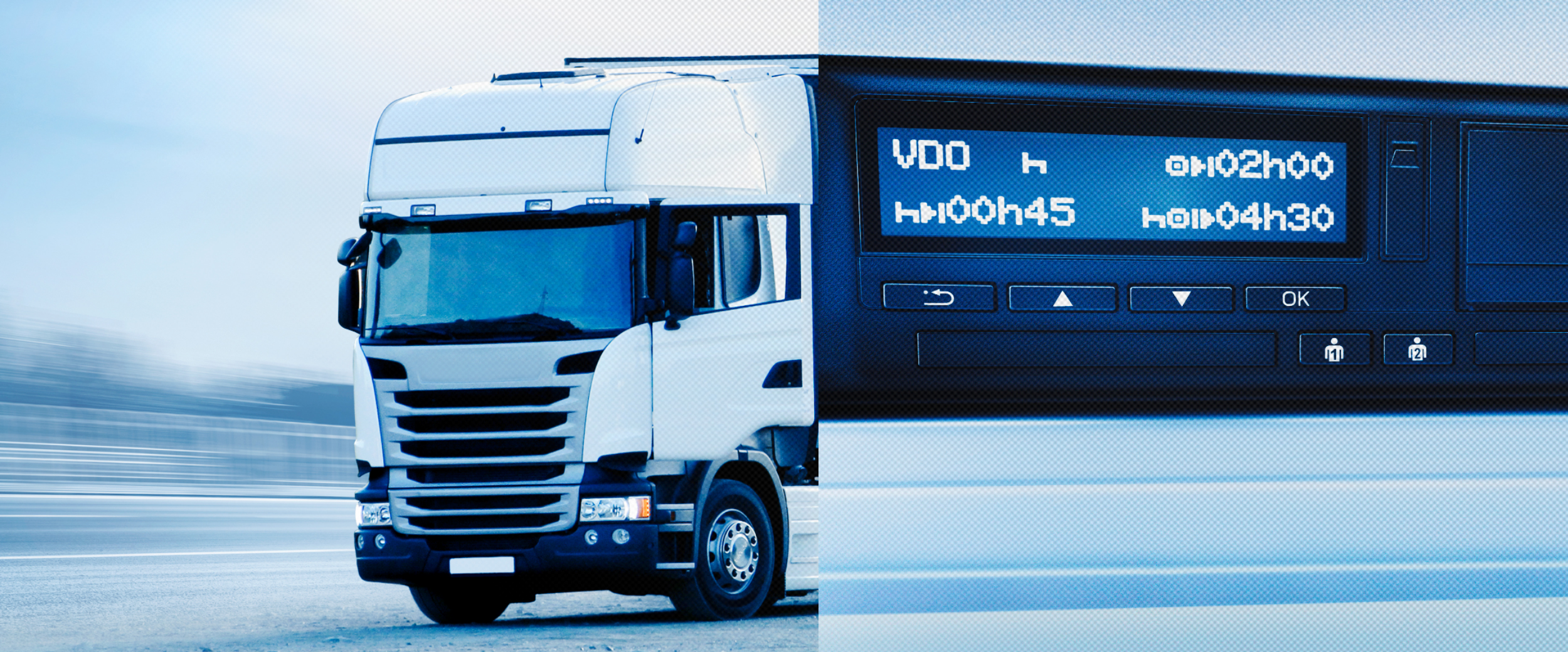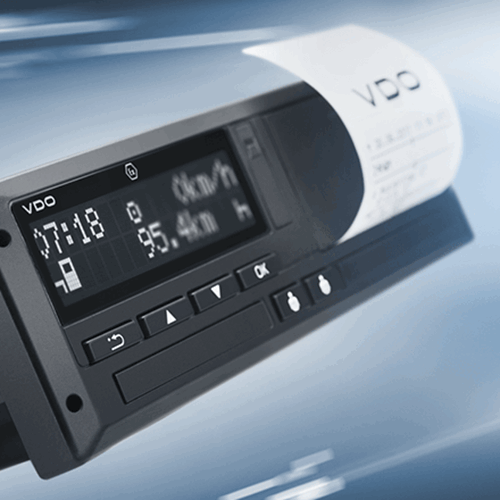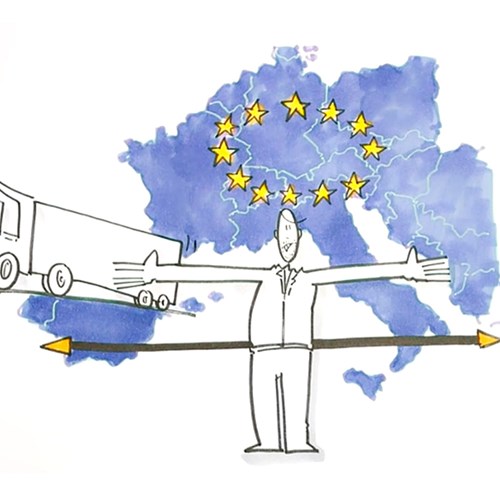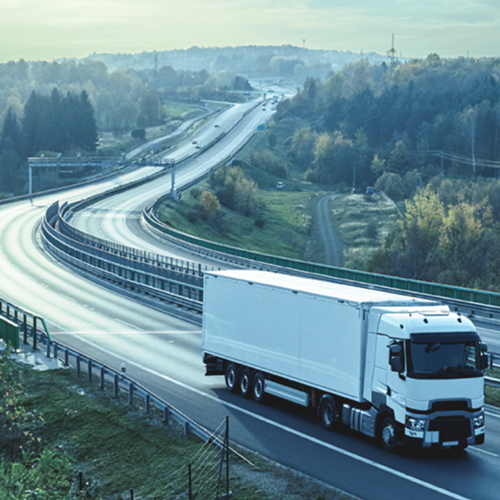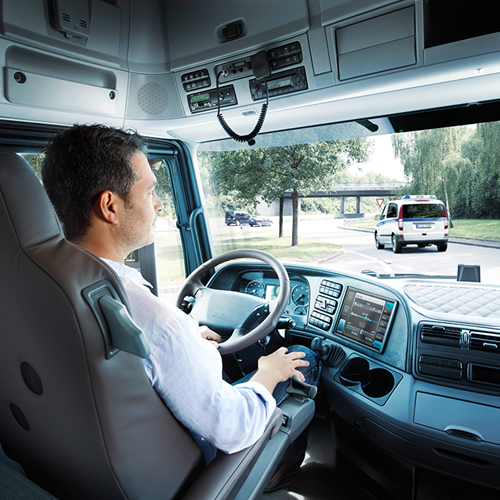With the integration of the smart tachograph into an increasingly digital transport infrastructure, this device is now playing a much more important role. The recently adopted EU Mobility Package I of the European Union also relies on the intelligent tachograph as a reliable data supplier for cabotage control. Considering the opportunities that will be available to users of the device in the future, its original descriptions like “tachograph” or “EC control device” no longer do justice to its future role.
And this is only the beginning.
“Many challenges in the transport industry can already be solved today thanks to reliable data from the DTCO 4.0,” says Marcello Lucarelli, Head of the Commercial Vehicles & Aftermarket EMEA business segment at Continental. Reason enough for him to give his presentation at the 2020 Continental Commercial Vehicle Day in September the title “And this is only the beginning!” Linking tachograph data with leasing calculations and driver bonus systems are just two examples of the versatile usage scenarios of this electronic supplier of reliable data. The already announced update for the DTCO 4.0 will also bring additional features such as the ability to verify data from an onboard weighing system and transmit it from the vehicle. Lucarelli is already promising even more useful features for the DTCO 4.1, which will be available in the spring of 2023 at the latest. “There are almost no limits to our imagination in terms of what it can achieve,” he enthuses.
Visionary mind games.
Visionary thought processes and a multifaceted imagination can indeed help to fully grasp the future significance of the intelligent tachograph.
The DTCO® 4.0 already has an integrated GNSS antenna with powerful reception and access to satellite systems such as Galileo, GPS and GLONASS. Satellite-supported positioning is used to record a vehicle’s location at the beginning and the end of the daily working time – and (currently) after three hours of active driving time. In addition to its basic functions of recording driver and vehicle data, a digitally networked tachograph will also make it possible to monitor compliance with social standards, and even simplify the calculation and payment of bonuses for correct driving behaviour.
With its DSRC interface, the new DTCO 4.0 already provides functions that could be used in the future to harmonize toll accounting and toll monitoring throughout Europe. Sensors located on the axle could also transmit encrypted weight and axle load data to the protected infrastructure of the tachograph – and from here, the tachograph would feed this data into a toll calculation that would be both reliable and individual. In this way, even the inclusion of the pollutant class of the tractor vehicle would be conceivable.
Above all, lucrative insurance policy models could be developed in cooperation with the insurance industry, since insurance for fleets constitutes a hefty portion of their operating costs. For example, tachograph data could be linked with data on the frequency of accidents along specific routes. Trucks that regularly travel on a particularly accident-prone highway or have to drive long distances through urban areas would have different insurance policies than those that travel on less frequented or secondary routes. More individualized and dynamically adjusted policies would ensure greater efficiency for policyholders and insurers alike – and the additional integration of data on load type, axle load and driver behaviour could refine these results even more.
Providing up-to-date weather data along the route used to be an unattainable vision of the future for drivers and fleets – but the Continental technology company has long been researching and developing the possibilities offered by 5G network expansion with latency in the millisecond range as part of V2V and V2X communication. For example, sensors on the wiper blades or windows of trucks could detect the onset of rain as it happens and share this information with following trucks or insurance companies.
Ensuring the protection of data and preventing manipulation.
Big Data’s focus in fleet management is always on the digital tachograph as a supplier of accurate and reliable data. However, where data is collected, there’s always a risk of data misuse or manipulation. The DTCO 4.0 already complies with the high security and data protection standards for processing personal data stipulated in EU Directive 2016/679. Any attempts at data manipulation are also counteracted by the cryptographic improvement of communication between the tachograph and sensor, more in-depth electronic encryption and an even more secure device sealing procedure. Tachograph manufacturers know that digital prevention of manipulation and protection of tachographs and sensors against misuse are never-ending processes – and VDO invests just as much in these processes as it does in securing and simplifying test processes in compliance with §57b. The workshops which carry out the compliance checks also have a special responsibility here – but the new Workshop Tablet considerably speeds up the §57b check and also helps to quickly uncover inconsistencies in the data. This handy device also documents the entire testing process carefully and completely, so any manipulation attempt will be quickly detected and can be proven in detail.
